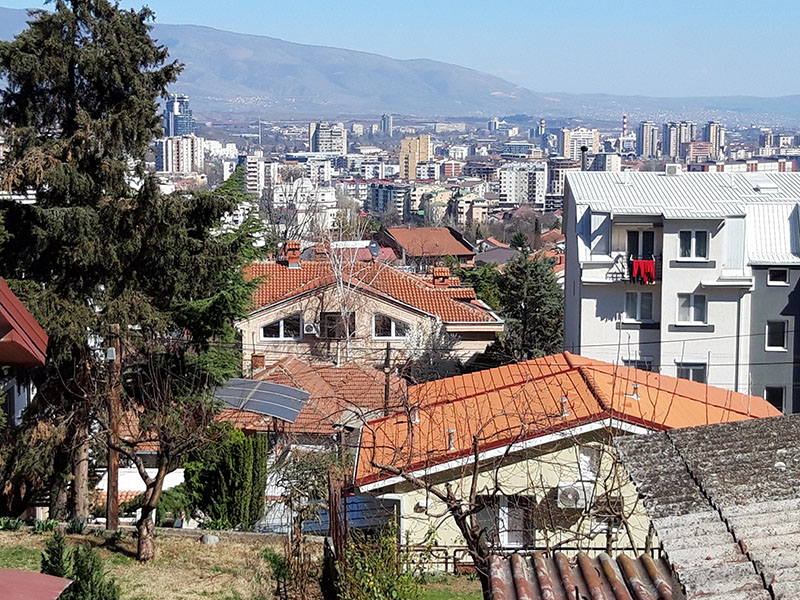I usually go from my house in Crniče to the city’s center walking. Sometimes I take one of the shortcuts that weave their way down the hill, cutting through the dense tree foliage in summer. We commonly say we live in Vodno; it directly positions our home on the lower folds of the Vodno mountain, where our neighborhood Crniče, is. Skopje is a relatively flat city; it stretches over a plain surrounded by two mountains, the Vodno mountain in the southwest and the Skopska Crna Gora mountain range in the north. While the Skopska Crna crosses the boundaries of the city and country and is shared with the neighboring Kosovo, it remains distant in the consciousness of Skopje’s inhabitants; whereas Vodno is the natural backdrop of the city. It gives a sense of orientation and is a symbolic landmark. It reminds us of the Tibidabo hill in Barcelona. The latter is topped with the Temple Expiatori del Sagrat Cor de Jesús, whereas Vodno boasts the Millennium Cross, built in 2002. It is one of the highest crosses in the world and was built where a previous and smaller cross existed. The spot was called the Krstovar. In the night, the cross’s bright lit arms embrace the sleeping city on its feet. Vodno is the green feature integrated in the cityscape and urban life. On the weekends, hikers and bikers, alone or in small groups, are seen undertaking the long route from the city until the cross or to some lookouts scattered on the hill.
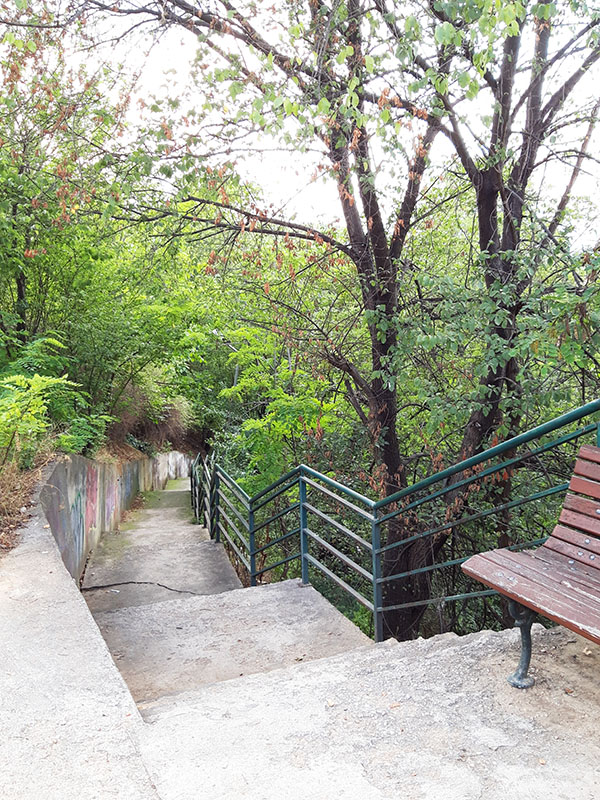
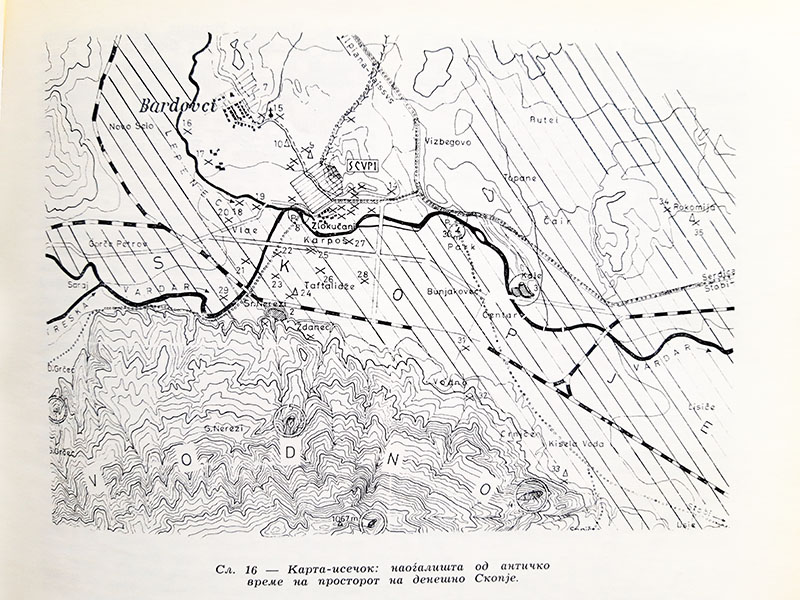
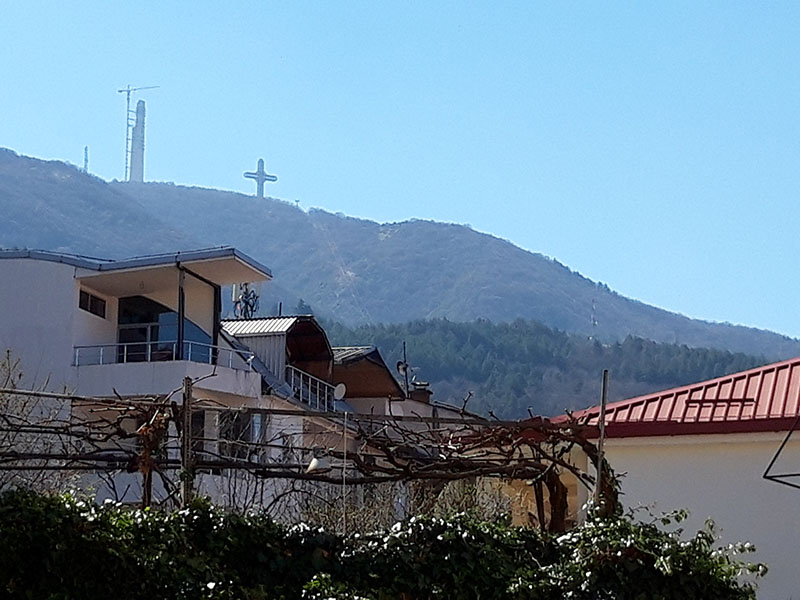
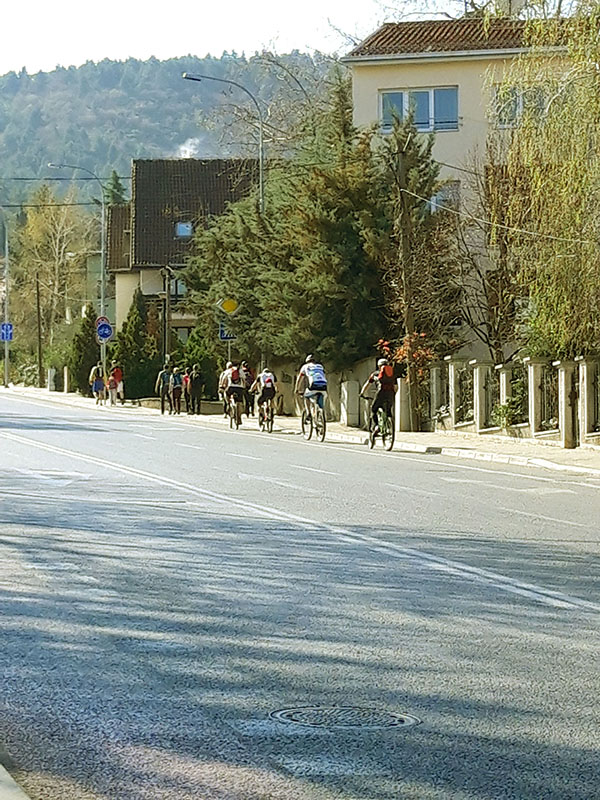
Many neighborhoods are nestled in the folds of the Vodno mountain in the direct vicinity of the urbanized plain. Our neighborhood, while 15 minutes walking from the center yet remains like a small village. People would greet you in the street, children play outside, neighbors know each other, and even if you barely speak macedonian some kind old lady would insist on inviting you for coffee or heating your toddler’s lunch during an electricity blackout, the baker in the small grocery bakes his own bread and pastries daily, even the snow lingers longer on the trees and houses and the air is fresher during the hot days.
When we arrived in the summer of 2017 with our baby daughter, we were happy to go out for long walks with the stroller without the fuss of the city traffic. The fruit trees were full with pears and peaches, the vines with raisins. And then, with the coming of the fall, the trees were heavy with quince and apples. Crniče reminds me of my lebanese village and of my childhood summer days; of the swing hanging from the vine, of picking up wild mulberries and playing hide and seek on the street behind our house.

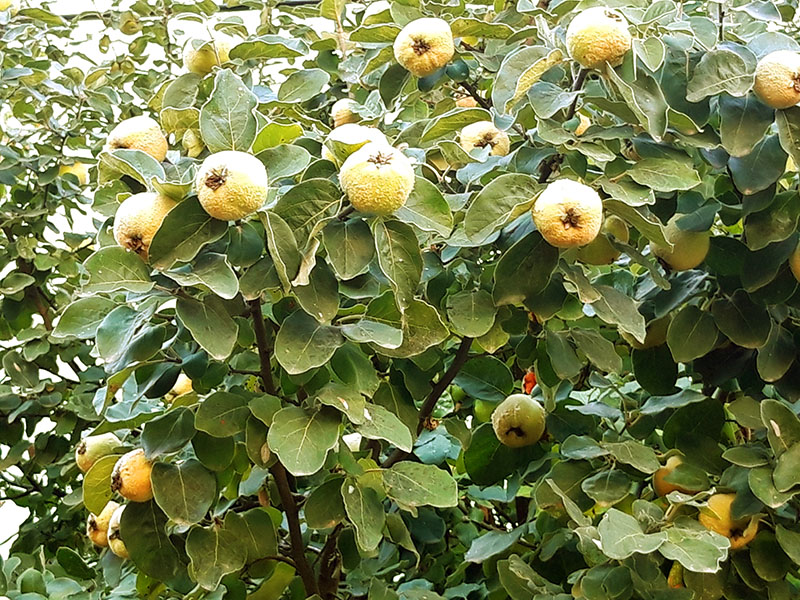
It is also quite clear that despite preserving its village like appearance, Crniče’s house composition reveals how the neighborhood evolved during the last decades. Variegated architectural styles and typologies build a narrative of the neighborhood’s story. Single houses with a garden, two or three floors family buildings, some recent apartment blocks, ostentatious villas à la Meir with large bay windows glittering glamorously at night, and a fan-shaped hotel still in construction, overhanging the neighborhood from its highest vantage point. New constructions colonized this initially small neighborhood, on one of the Vodno’s hills, over the last three decades. The phenomenon started in the 90s, after the end of the Yugoslav period, and hence socialism. Although, as far back as 1914, Dimitrijie T.Leko, the Serbian urbanist in charge of elaborating the urban plan of the city, had included the Vodno folds in his spatial compositions. It was the time when the city beautiful visions of Camillo Sitte and the viennese Ringstrasse model largely influenced urban planning. Leko projected big scale ensemble in the periphery of the city’s old core, where he had enough space to implement them. To locate the big and small exposition park and university campus, he chose one of Vodno’s slopes. The only trace left of this ensemble is on the original plan. Instead, residential houses sprawled up Vodno’s hill slowly configuring the actual neighborhoods.
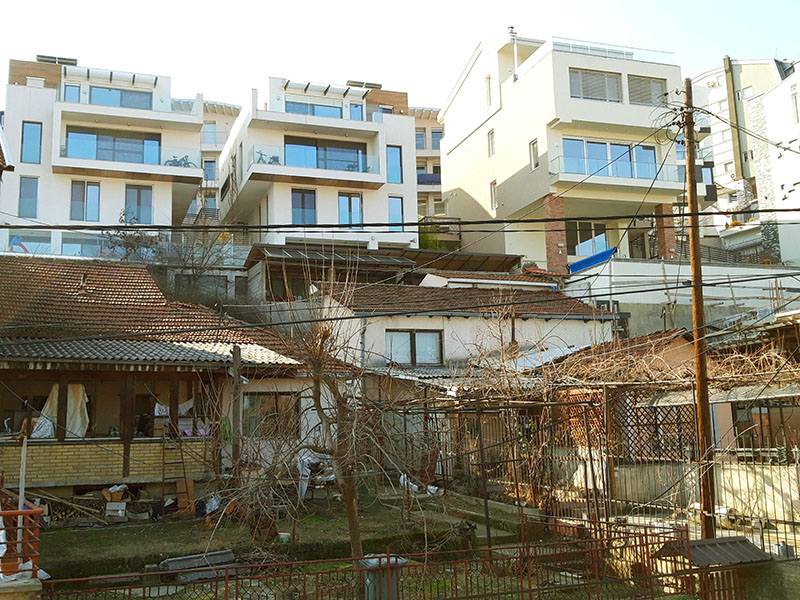
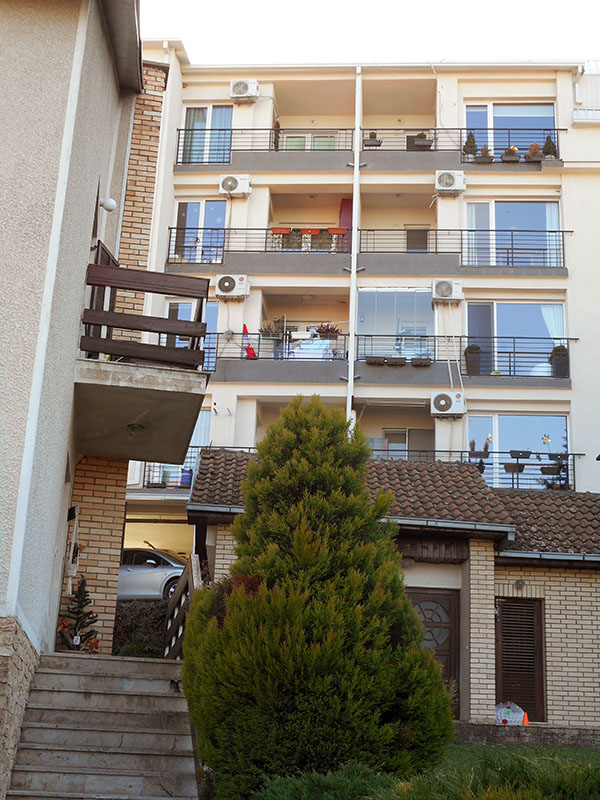
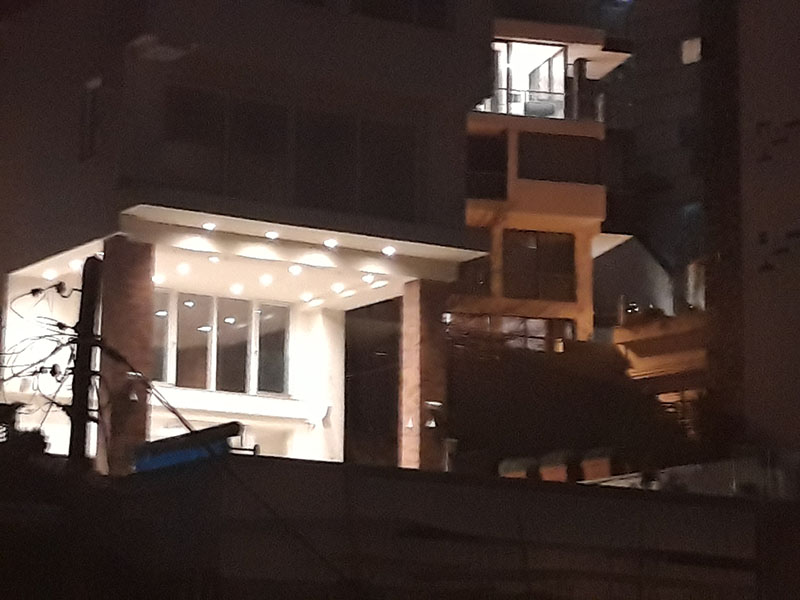

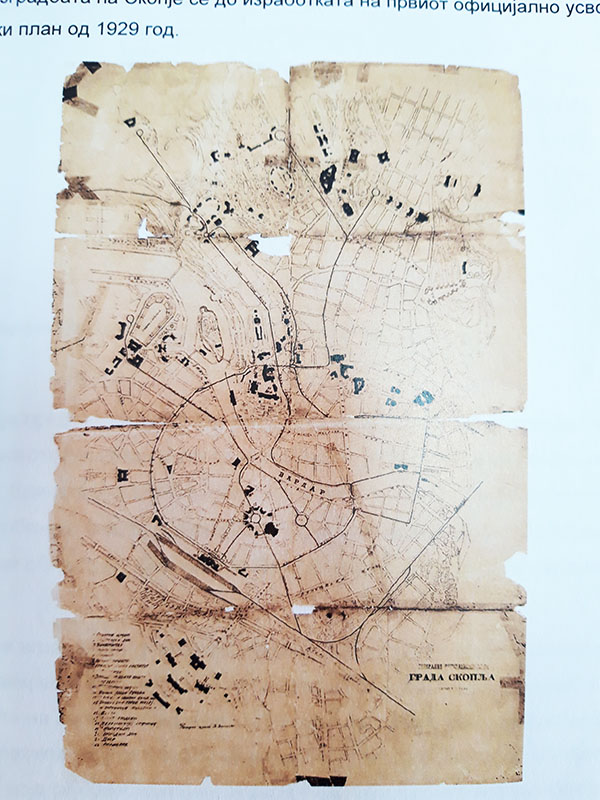
A few of the initial houses of the neighborhood remain until today. Some are inhabited, most often by old people, others are abandoned in a rundown state. Undoubtedly, Crniče got overcrowded because of the citizen’s preference for some nature and panorama, so they traded the plain and its wide boulevards for the hilltop and winding streets. The narrow and sloppy terrain of the hill is getting filled up with overridden houses, and little free space is left to build. This probably explains the recent multiple storeys houses and also some new buildings of 4 floors, as a desperate attempt to better take advantage of the precious lot of land and a glimpse of the panorama. But mainly the streets remain charming in their way; with the gardens in the forefront, amorously taken care of by the inhabitants. A typical profile of a street in Crniče consists of modest but charming low rise houses, picturesque gardens blooming with tulips and roses in spring, some chairs under a sun umbrella on a terrace, a child’s bicycle lying on the grass. Everyday life traces scattered on the loans and house facades. It warms the heart of a disillusioned architect, deceived by the city’s getting every time more overexposed, swept in the commodified imagery and lacking every day’s life candor and complexity at the same time. That’s why I will omit the pictures of Crniče’s street in an act of avoiding their absorption in this wave of commodification. I leave it to your imagination or as an invitation to come and have a walk in Vodno.
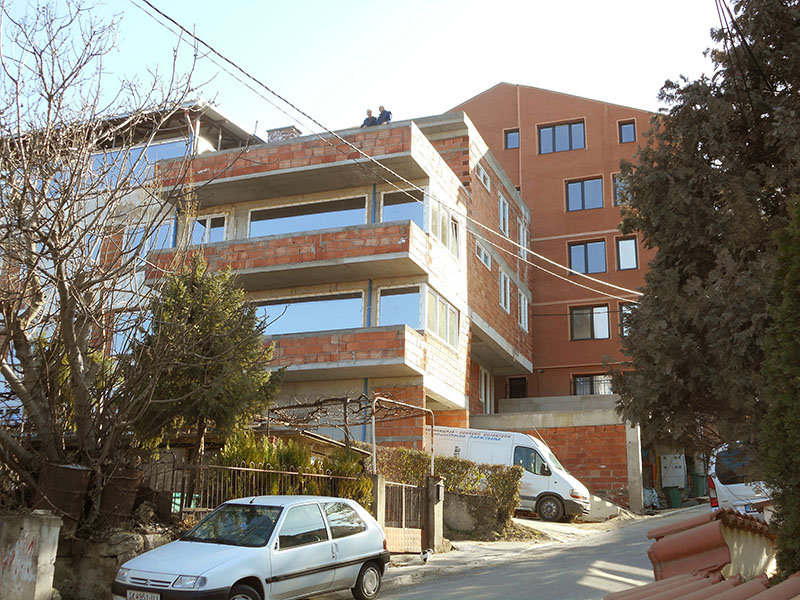


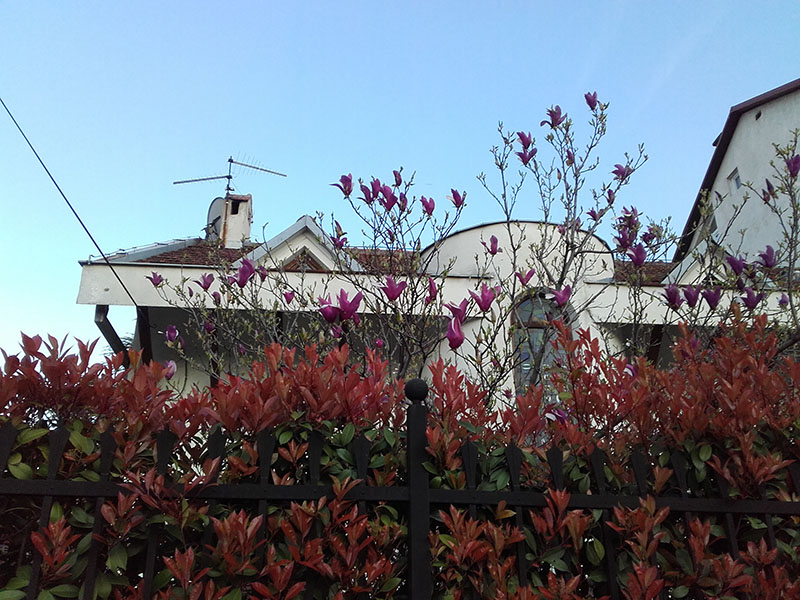
I am fascinated by two houses. If I were bolder and richer, I would probably have installed a restaurant in each one. But…I am not. One would have a long balcony hanging between tall trees; the other, an elegant art deco terrace facing the Skopska Crna panorama. Eventually, I have resigned myself to taking some photos. Nevertheless, if someone is willing to make this endeavor, I would be glad to share some ideas and recipes.
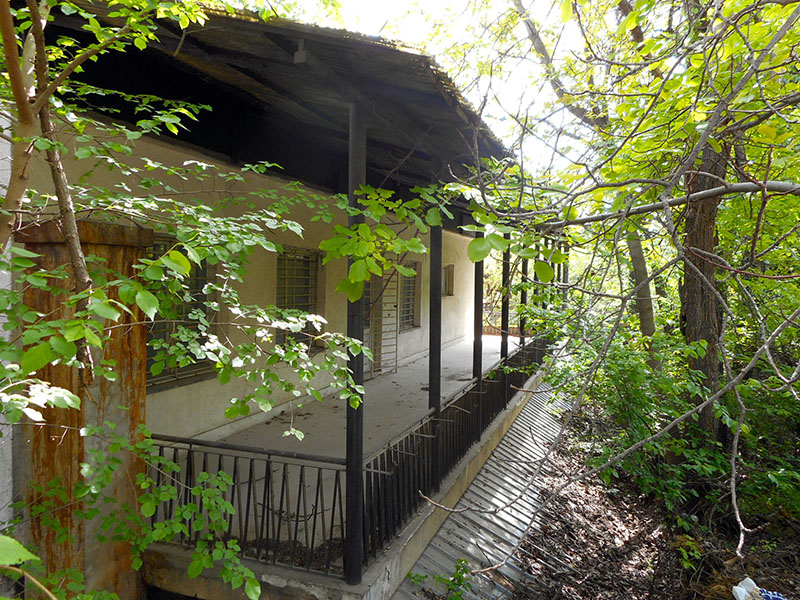
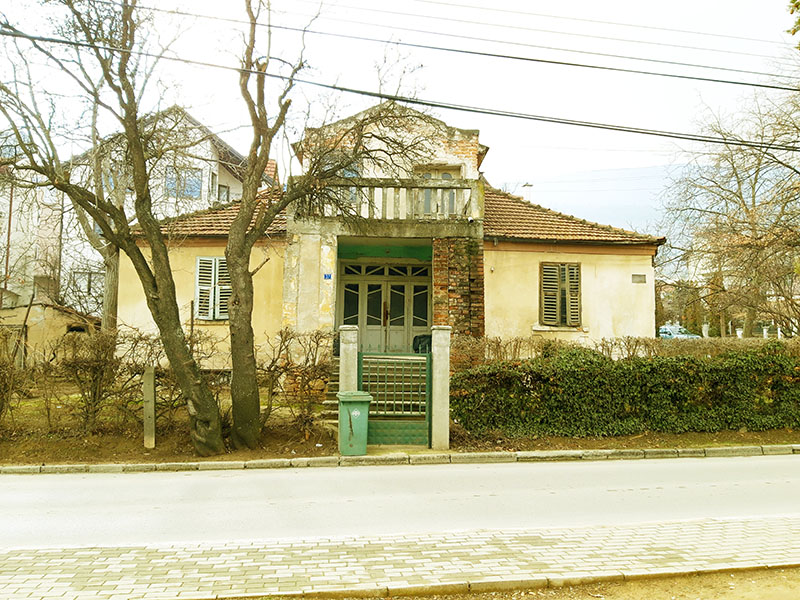
Anyway, somebody already thought about it and established a very nice and warm restaurant in Crniče in the 34th of Partenija Zografski street. Be it winter or summer, inside the old-fashioned decorated house or on the flowered terraces, Baba Cana offers a very agreeable stay. Established on the 17th of December 2014, the restaurant serves typical food from Kumanovo a town in the northeast of North Macedonia. A special attention is given to the quality of even the simplest of food served, such as a salad or a filo pie. In summer, live music, the jingle of glasses and the smell of barbecue spring out from the restaurant, cheerfully inviting you in.

It makes me, the frustrated restaurateur, jealous. A harmless jealousy that is. To sweep away my sorrows, I brought my table to one of my favorite terraces in Crniče, the art déco terrace facing Skopska Crna. The owner of the house, Kiro Popvoski, was born here, and his family is the fourth one to occupy the house. He was busy working in the garden but was kind enough to let me position my table on the terrace of my dream restaurant; for a consoling picture. Thank you Kiro.


